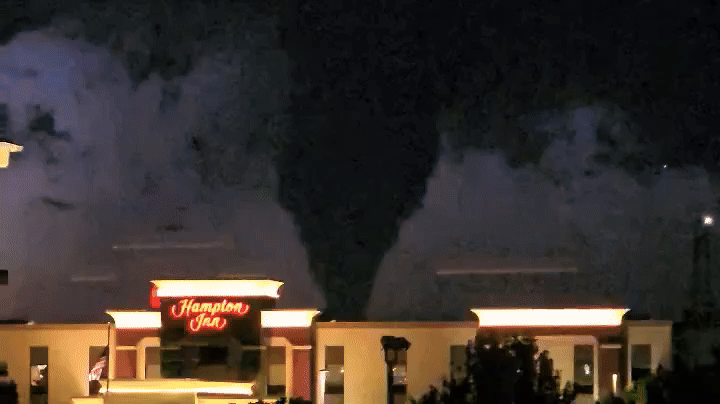Severe weather alerts are posted across parts of the Plains on Thursday and chances of strong to severe thunderstorms are expected to continue through the weekend and into next week across a wide swath of the central and southern US as a series of frontal boundaries and associated moisture converge along the western edge of an Atlantic ridge of high pressure.Any thunderstorms that develop over the next few days have the potential to produce damaging wind gusts, large hail and even an isolated tornado as the country marches deeper into meteorological summer.But depending on daily atmospheric conditions, some days could be more active than others, while severe weather reports might range from a few dozen to several hundred.HOW TO WATCH FOX WEATHEROn Thursday, Severe Thunderstorm Watches and Tornado Watches stretched from the U.S.-Mexico border to northern Oklahoma, with the first tornado of the day spotted in eastern Arizona.No damage was reported and the landspout formed in a rural, as will most activity on Thursday.So far over the past week, Tuesday was the most active day for thunderstorms, with the Storm Prediction Center receiving over 200 reports of severe weather or damage stretching from the Plains to the Great Lakes.DOWNLOAD THE FREE FOX WEATHER APPOn Friday, nearly 88 million people will be at risk of seeing severe weather, but the SPC highlighted portions of the Plains and Mid-South in a Level 2 out of 5 threat.The severe weather threat then shifts Saturday to the Mississippi Valley and Southeast, with more than 40 million people in those areas in a Level 2 out of 5 threat.Any thunderstorm that forms could turn deadly – capable of producing torrential rainfall and dangerous cloud-to-ground lightning.The FOX Forecast Center will be closely monitoring two critical weather situations: the potential for “training thunderstorms”, where multiple storms repeatedly pass over the same area, and the development of any squall lines or derechos that could sustain themselves over long distances.ST. LOUIS GOES UNDER TORNADO WARNING JUST WEEKS AFTER DEADLY TORNADOOn Tuesday, thunderstorms dumped torrential rainfall over south-central Kansas, triggering Flash Flood Emergencies. A similar scenario could unfold again if a waterlogged community ends up under a slow-moving thunderstorm or a series of them.Without a significant shift in the overall weather pattern, cities such as Oklahoma City, Nashville and Huntsville, Alabama could see anywhere from half a foot to more than a foot of rain over the coming weeks.The forecast closely aligns with an outlook from NOAA’s Climate Prediction Center, which called for above-average precipitation through the first month of meteorological summer in areas that are receiving it.FLASH FLOOD EMERGENCY STRIKES KANSAS WITH WATER RESCUES AROUND WICHITAWhile the wet pattern is welcomed by some – especially for those who could easily face triple-digit heat and drought conditions – others may not be as fortunate.The Upper Midwest is one region to watch closely, where precipitation may struggle and impact the status of agricultural products.Known as the nation’s “breadbasket,” this region is in what is considered to be the growth stage for crops such as wheat, grains and corn. Without sufficient rainfall over the coming weeks, concerns may grow for the health and the status of crops.On the flip side, the Southeast coast will be a region to watch to see if any of these complexes of storms are able to make it as far south, such as Jacksonville, Florida, or Charleston, South Carolina – communities that do not need more rainfall in the short term due to recently experiencing a wave of tropical moisture.
/
June 5, 2025
Tornado Watches among severe weather alerts stretched across Plains amid rinse and repeat pattern


